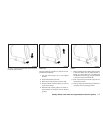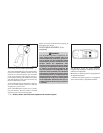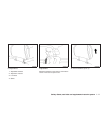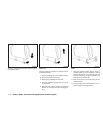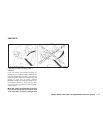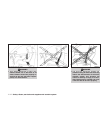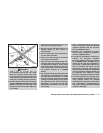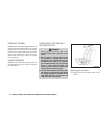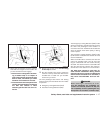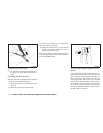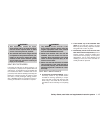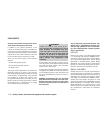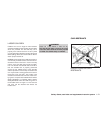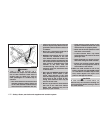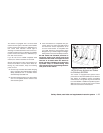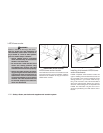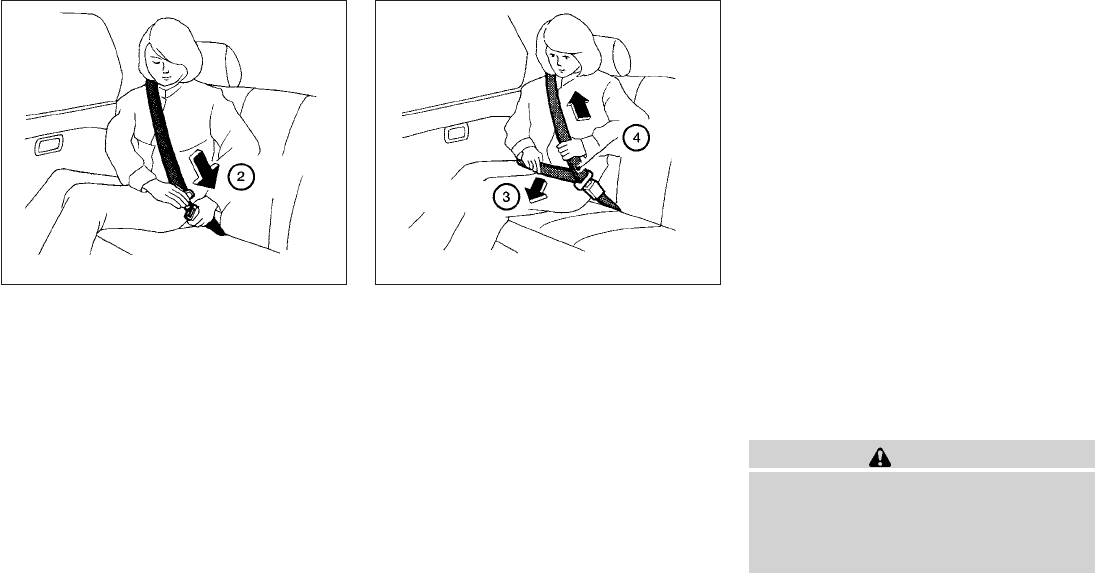
᭺
2
Slowly pull the seat belt out of the retractor
and insert the tongue into the buckle until
you hear and feel the latch engage.
● Theretractor isdesigned tolock dur-
ing a sudden stop or on impact. A
slow pulling motion permits the seat
belt to move, and allows you some
freedom of movement in the seat.
● If theseat beltcannot bepulled from
its fullyretracted position, firmlypull
the belt and release it. Then
smoothly pull the belt out of the re-
tractor.
᭺
3
Position the lap belt portion low and snug
on the hips as shown.
᭺
4
Pull the shoulder belt portion toward the
retractor to take up extra slack. Be sure the
shoulder belt is routed over your shoulder
and across your chest.
The front passenger seat and the rear seating
positions three-point seat belts have two modes
of operation:
● Emergency Locking Retractor (ELR)
● Automatic Locking Retractor (ALR)
The Emergency Locking Retractor (ELR) mode
allows the seat belt to extend and retract toallow
the driver and passengers some freedom of
movementin theseat.The ELRlocksthe seatbelt
when the vehicle slows down rapidly or during
certain impacts.
The Automatic Locking Retractor (ALR) mode
(child restraint mode) locks the seat belt for child
restraint installation.
When the ALR mode is activated, the seat belt
cannot be extended again until the seat belt
tongue is detached from the buckle and fully
retracted. The seat belt returns to the ELR mode
after the seat belt fully retracts. See “Child re-
straints”later in this section for more information.
The ALR mode should be used only for
child restraint installation. During normal
seat beltuse byan occupant,the ALRmode
should not be activated. If it is activated, it
may cause uncomfortable seat belt ten-
sion.
WARNING
When fastening the seat belts, be certain
that the seatbacks are completely se-
cured in the latched position. If they are
not completely secured, passengers may
be injured in an accident or sudden stop.
WRS0137 WRS0138
Safety—Seats, seat belts and supplemental restraint system 1-17



